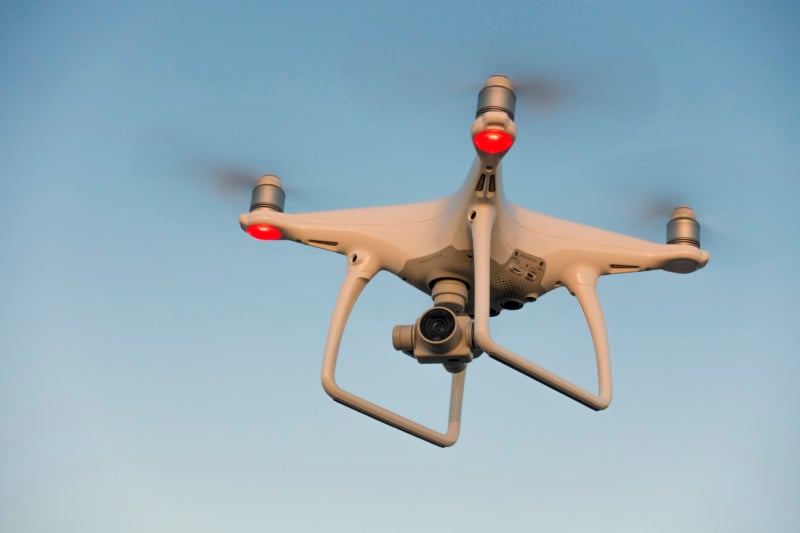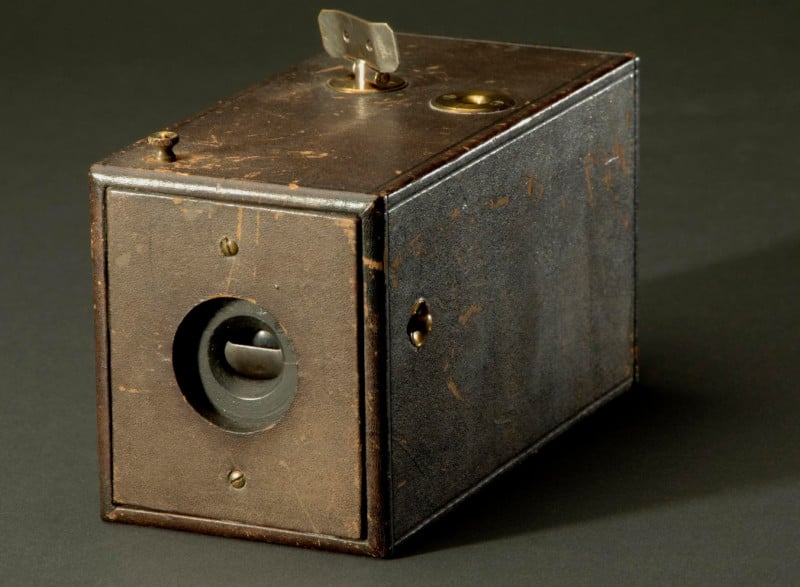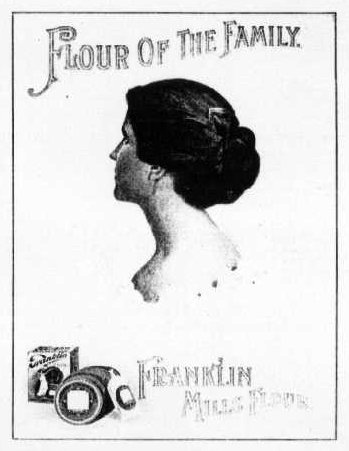How Has The First Brownie Kodak Camera Impacted Today's Society
![]()
Information technology was the kind of summer day that your heed instantly recalls when you hear the words "summer twenty-four hours". Warm, sunny, gorgeous. William Meredith's daughters, as was their habit when a day felt this good, lounging in the backyard, sunning in their swimsuits. All was peaceful — until the girls entered the firm, warning their father of an intruder in their backyard.
Meredith grabbed his shotgun and bolted exterior. He scanned the surroundings and quickly found his target, now creeping effectually a neighbor'southward g. Before too long, the snoop turned and headed back William's style. He waited until the peeping tom had crossed over the property line, and…
All it took was one shot.
But the company had not been alone. Iv men approached his habitation from the front. William was set up. As the angry men approached, he issued a warning:
"Cross my sidewalk, in that location'due south gonna be another shooting."
The men decided to have their frustration to the local regime. Shortly thereafter, William Meredith was arrested for the murder of… an $one,800 drone that had been flying around his neighborhood.

The owner of the drone, David Boggs, claimed he had simply been flying effectually taking photographs of a nearby house for a friend. For Mr. Meredith's part, he viewed the intrusion as tantamount to the home invasion you probably imagined I was describing. It is likely this is non the just such story you accept heard over the final several years regarding drones and privacy. Only while the technology is new, the argument is anything just.
It has at present been well over a century since Joel Benton's verse form "The Kodak Fiend" warned, in ominous verse, "Oh, de Kodak fiend, he's sly an' hateful / An' y'all can't go out virtually his machine."
The democratization of photography has, from its very get-go, brought with information technology the take chances — as well every bit the fear — of loss of privacy. The story of how society reacted to this phenomenon is rich and far-reaching, upending social norms and creating wholly new legal precedents. One camera, more than any other even to this twenty-four hours, helped build the globe we occupy: The Kodak Credibility.
In the tardily xixth century, the Eastman Kodak company had been making strides toward — and waves with — more cheap, portable camera options. Still out of the accomplish of many consumers, though, at $25 each (over $700 in today'south dollars), these first attempts institute their way into the hands of a very particular class of citizens: reporters. It is no wonder, and so, that the commencement group to sound the loudest alarms over privacy were not the common folk, only rather the well-heeled, upper-class types nearly likely to generate headlines.

While American society has always been stratified and public personas of the powerful have always been carefully manicured, in the late 19th century the aristocracy enjoyed considerable control over their separation from the rabble. With affordable photography, they plant the veil existence lifted, a click at a fourth dimension, and they were not pleased. Gossip merchants and sleuthhounds were at present empowered with a vastly more potent tool to shed light upon and wrest away control from their advisedly crafted public image.
It is no wonder, then, that the showtime major treatise on these concerns emerged from one of the nation's well-nigh elite institutions. In 1890, the Harvard Law Review published an commodity entitled "The Correct to Privacy" by Samuel D. Warren and Louis Brandeis. The certificate became one of the most influential writings in American legal history.
While attributed to both men, the reality is far more telling. Brandeis, a Jewish immigrant and future Supreme Court Justice, handled virtually of the writing but had been urged toward it by Warren. Warren, the son of a paper mill magnate and a fellow member of the high gild and then threatened past this accessible engineering, was incensed by the intrusion of this proto-paparazzi upon his way of life. The article itself makes the concerns quite plain:
The printing is overstepping in every direction the obvious premises of propriety and of decency. Gossip is no longer the resource of the idle and of the vicious but has go a merchandise, which is pursued with industry every bit well as effrontery. To satisfy a prurient taste the details of sexual relations are spread broadcast in the columns of the daily papers. To occupy the indolent, column upon column is filled with idle gossip, which can only be procured by intrusion upon the domestic circle.
These concerns were not relegated to the wealthy for long, however. A decade after the influential article's publication, the Eastman Kodak company released the first undeniably mass-market place camera: The Kodak Brownie. For the cost of $one (equivalent to $32.66 in today'south dollars), anyone could take hold of a inexpensive paper-thin box with fake leather coating and a meniscus lens and aim it anywhere they pleased.
![]()
In our current world, news has exploded with revelations of Instagram's effect on teenagers, particularly young girls, and how, despite this potential harm, the company was actively designing an alternating version of its app for an fifty-fifty younger audience. It has since been put "on concord" due to public force per unit area. The power of algorithms and information harvesting is pregnant, but the Kodak Credibility was doing it all first.
![]()
The name "Brownie" itself was more than merely a reference to the camera's designer, Frank A. Brownell — it was a bit of marketing genius. The cutesy name, accompanied by magical mascots from a popular series of children's books, existed solely to target Kodak'south affordable photographic camera to children.
"Plant the Brownie acorn and the Kodak oak will grow," was a popular slogan at the time. It worked like gangbusters. Eastman Kodak shipped more than than 1.v million Brownies in the first year of production. Forget the socialites outside their fancy soirees, the Brownie is when schoolyard had become a photo studio. At every level of American life, privacy had changed.
![]()
The explosion of images was inextricably linked to an explosion of intrusions, new and strange to the civilisation. The public could non become enough of the Credibility, and their sense of propriety began to relax in society to arrange their new fascination. Your average citizen could now capture moments of extreme humanity, poverty, embarrassment, and harm that had been unthinkable before. The common person was at present too offset to wonder, what were the new rules? The law was going to take to take hold of up with the times, and the very aforementioned year the Credibility was introduced, information technology would face its first test.
Abigail Robertson was a teenager from Rochester, New York who had sat for a portrait at a local studio. This was, by at present, a mutual plenty practice. What was uncommon, however, is what Abigail saw in shop windows some fourth dimension after her photo was taken. All over the town of Rochester and well beyond, Abigail's face graced poster later poster, advertising the flour of a nearby factory. Without her noesis, with no understanding on her part, Abigail had become the mascot for a product, and in storefronts, warehouses, and even saloons, acquaintances saw and recognized her daily. All in all, 25,000 such posters were produced and distributed.

For Abigail, this was horrific. The embarrassment and confusion she experienced led her to severe nervous shock, leaving her bedridden and attended to by a physician. This was merely non something a person of this time period was prepared to handle.
Abigail sued Franklin Mills, the flour mill for which the advertisements were produced, and the Rochester Folding-Box Visitor, which were responsible for the production of the posters, for $15,000 in damages (nigh half a one thousand thousand dollars in today'south currency) and an order forbidding her likeness existence used in any advertisement.
At the start trial, in the Supreme Court of Monroe County, the defendants' argument was simple: They had the correct to use Abigail'southward photo because in that location was no police force saying they did not have such a right. The guess was unmoved. Interestingly, his reasoning hinged a cracking deal on Abigail'south station in life as an everyday citizen. In good censor, he could non rule that a normal person should exist placed in such a position, as they had invited no attending on themselves and had sought no glory. He concluded that such utilise of Roberson's likeness without consent was not only obviously traumatic, but the very act of selecting her prototype for advertizement indicated information technology possessed value, and the right to such value belonged to Robertson herself.
Franklin Mills and the Rochester Folding-Box Visitor appealed, unwilling to cede payment and end the use of their pop advertizement campaign. The instance finally traveled all the way to the State of New York Court of Appeals. In that location, over a decade after its publication, Warren and Brandeis'due south "Right to Privacy" was invoked repeatedly by Abigail'due south lawyers.
Shockingly, it did lilliputian skilful. By a 4 to three conclusion, Robertson's victory was overturned. The Court of Appeals ruled that Abigail's face had no inherent value whatsoever, was not physical holding, thus nothing had been stolen from her. Additionally, Chief Approximate Alton Parker concluded "correct of privacy" had no house basis in present jurisprudence. It was a devastating determination, made more bitter by the courtroom's dismissal of Abigail'south suffering as "purely mental," and Chief Gauge Parker'southward demeaning comments to the young woman about how she should be "flattered" someone found her then beautiful.
Unsurprisingly, Abigail's case had become immensely pop with the public, touching on concerns shared by many Americans at the time. To see her defeated in this way infuriated the public. The state was long past the self-pitying complaints of the bourgeoisie over gossip rags. This was about the common folk. If they could practise this to this innocent daughter, who was adjacent? The outcry was then firsthand and intense that the New York State Legislature was compelled to human activity.
![]()
In 1903, New York became the start state to recognize a right to command the employ of 1's name and image. Though express in telescopic, it did criminalize the non-consensual use of one's prototype for advertisement and merchandise. Others who had experienced invasions of privacy like Abigail's were empowered to file a ceremonious arrange to cease farther employ of their likenesses and exist compensated. Other states followed. Warren and Brandeis'due south "The Right to Privacy" was used in over a dozen cases to bring about the recognition of the common law right of privacy.
Inside a few years, a manual on the police of advert was already recommending written and signed releases from models. Past 1909, the issue found its fashion to the Supreme Courtroom, where a woman successfully won, arguing that a photograph of her used in a whiskey advertizement constituted libel. Mrs. A. Schuman argued reputational harm in existence associated with such a product when she was quite proudly a adult female of impeccable sobriety. In this new era of the snapshot, the new rules were quickly coming into focus.
![]()
Brandeis, for his part, was not done with the topic. His passion for privacy rights followed him all the fashion to the Supreme Court, wherein in 1928, he wrote a thunderous, historic dissent in Olmstead five. U.s.a., arguing evidence obtained by wiretap violated the 4th and Fifth Amendments. Though he lost at the time, some 4 decades after, the court would overturn the ruling and finally hold with his position.
The right to privacy became a core consideration for Americans. Increasingly, this right plant itself at the center of a multifariousness of issues. In the 1960s, it was invoked to protect the right of married couples to purchase contraception, which set the stage for one of the most consequential victories for privacy in our nation's history, Roe 5. Wade.
![]()
Every year that passes, we encounter new, frightening ways in which our privacy is intruded upon. Terms of Service for well-nigh any transaction, purchase, or online membership have get an inscrutable rats' nest meant to overwhelm the average citizen to the point of ceding their rights without even knowing to what degree they take done so. Facebook and Instagram are probably, collectively, the largest photo album in the history of the medium. There have long been concerns, some well-founded, that the images we are sharing online will show upward in an advertisement, or equally part of some corporation's "content."
![]()
Even as recently equally last twelvemonth, the social media giant began updating its rights management systems, working with sure, undisclosed partners to grant them the power to claim ownership of their images and dictate when and where those images show up across the platform. How will this impact you in the future? This remains unclear.
What is undeniable, yet, is the shift to attainable photography — pioneered past Eastman Kodak and brought to new heights over a century ago with their cheap little Brownie — started a conversation in the state that has since spilled into every aspect of public life.
Sources: Wikipedia, WireWheel, The Chronicle, Timeline.
Image credits: Header image made of photos licensed via Depositphotos.
Source: https://petapixel.com/2021/10/19/how-the-kodak-brownie-changed-privacy-rights-forever/
Posted by: ackerfainjusly.blogspot.com


0 Response to "How Has The First Brownie Kodak Camera Impacted Today's Society"
Post a Comment